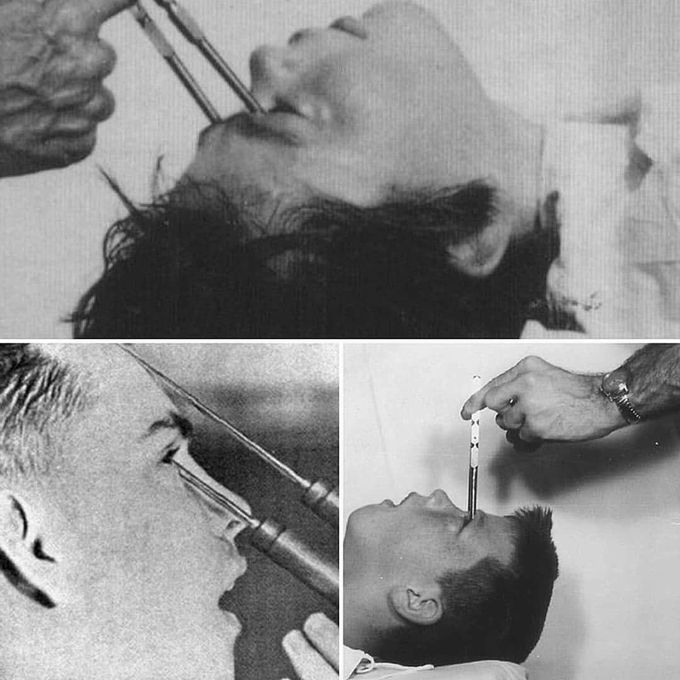


Lobotomy
In 1936, the American neuropsychiatrist Walter Freeman performed the first lobotomy in the United States—a procedure which he adopted and adapted from the Portuguese neurologist Antonio Egas Moniz. A few years later, he began looking for a more efficient way to perform the operation without drilling directly into the skull. As a result, he created the transorbital lobotomy in which a pick-like instrument was forced through the back of the eye socket to pierce the thin bone that separates it from the frontal lobes. This procedure—which later became known as the “ice-pick” lobotomy—could be performed in under ten minutes without anesthetic. Shortly after that, Freeman took to the roads with his ice-pick and hammer, touring hospitals and mental institutions around the country. He performed ice-pick lobotomies for all kinds of conditions, including headaches. Eventually, he began performing the operation in his van—which later became known as “the lobotomobile.” At one point, he undertook 25 lobotomies in a single day. Many of his patients never recovered, including Rosemary Kennedy, sister to JFK. Rosemary was described by members of her family as a rebellious child who was prone to violent mood swings while she was growing up. In November 1941, Rosemary’s father took her to see Freeman, who performed the lobotomy right then and there, without her mother’s knowledge. Shortly afterwards, it became clear that something had gone terribly wrong. Rosemary could no longer speak, and her mental capacity was equivalent to that of a toddler. Her father institutionalized her, telling people that his daughter was mentally retarded rather than admitting that her condition was due to a failed brain operation. It was only after his death decades later that the truth behind her condition was revealed. from @drlindseyfitzharris
Chlorpromazine was the drug which ended the era of lobotomy. Chlorpromazine supresses the dopamine activity in brain. Which in turn solved many behaviour and mood related disorders
Phineas Gage: A Case Study in Brain Injury and Personality Change
A 70-year-old man presents with difficulty walking, particularly when turning, and a sensation of his feet being "stuck" to the floor. His gait is characterized by hesitation and freezing when initiating steps. Which of the following is most likely to be observed in this patient? A. Spasticity B. Foot drop C.Freezing of gait D. Romberg signBest Probiotics For Womens 2025: Are They More Effective?Effects of sugar on teeth



